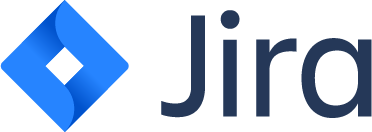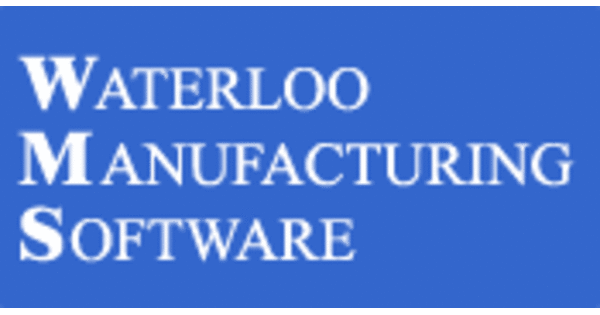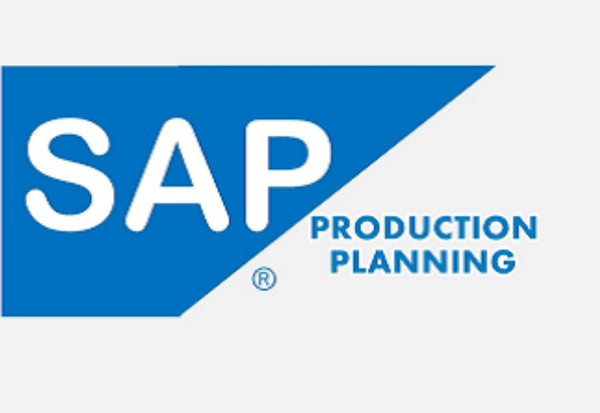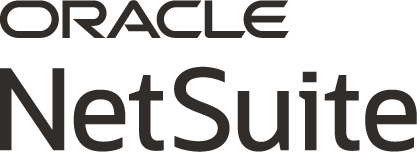Production teams today face tighter deadlines, shifting customer demands and rising operational costs, making efficiency a top priority. Managing resources, schedules and workflows manually is not enough to maintain accuracy and speed. Companies need tools that can streamline planning, ensure tasks are completed in sequence and provide visibility across departments to avoid costly delays.
The best production planning software helps businesses stay on track by centralizing schedules, monitoring progress and optimizing resource allocation. With real-time updates and advanced reporting, managers can quickly identify bottlenecks and make data-driven decisions. This level of coordination keeps production on time and within budget while improving output quality.
What Is Production Planning Software?
Production planning software is a digital tool designed to organize and control the flow of resources, tasks and schedules required to complete manufacturing or operational processes. It provides a centralized platform where managers can map out production timelines, allocate materials, assign labor and track the progress of work orders. By integrating data from multiple departments, it ensures that all aspects of production align with demand forecasts and delivery deadlines.
This type of software goes beyond basic scheduling by helping teams monitor inventory levels, manage equipment capacity and analyze production costs. Many solutions include automation features to reduce manual input and minimize errors, while real-time dashboards allow managers to adjust plans as priorities shift. The result is a smoother workflow, fewer bottlenecks and improved efficiency across the entire production cycle.
What Are the Best Production Planning Software Features?
The best production planning software brings together scheduling, inventory control, resource management and analytics to keep manufacturing and operations running smoothly. It replaces fragmented spreadsheets with a single source of truth so planners can sequence work, avoid bottlenecks and respond quickly to changing demand. Below are the core features that distinguish top solutions and what each one actually does for production teams.
- Interactive Gantt scheduling: An interactive Gantt chart lets planners visualize every task on a timeline, link dependencies, set milestones and adjust schedules with drag-and-drop ease. It shows the critical path and float so you can prioritize work that affects delivery dates. By exposing sequencing conflicts and resource constraints early, Gantt scheduling reduces firefighting, keeps teams aligned on deadlines and makes it simple to communicate timeline changes to stakeholders and suppliers without recreating spreadsheets or static charts.
- Capacity planning and leveling: Capacity planning evaluates available machines, lines and labor against forecasted demand to prevent overloads and idle time. Leveling smooths work across resources by shifting tasks or extending timelines while respecting delivery priorities. This feature enables realistic scheduling, prevents chronic overtime and improves machine utilization. With built-in alerts for overallocation, planners can act before delays cascade, ensuring production plans are achievable.
- Inventory management and traceability: Robust inventory controls track on-hand quantities, locations, lot numbers and expiration dates to ensure materials are available when needed. Traceability records material flows from receipt to production to shipment so quality issues can be isolated quickly. Real-time inventory visibility reduces blind spots, lowers carrying costs and supports first-in, first-out or other policies.
- Real-time dashboards and alerts: Dashboards surface live KPIs such as throughput, cycle time, work in progress and schedule adherence so managers see performance at a glance. Configurable alerts notify teams of missed milestones, machine downtime or shortages so corrective actions can begin immediately. Real-time visibility replaces periodic status meetings with continuous insight, enabling faster decisions, proactive problem solving and tighter alignment between planning, production and supply chain partners.
- Resource allocation and skills management: This feature matches tasks to the right people and equipment based on availability, capability and certifications. Planners can filter resources by skillset or qualification, reserve specialized machines and balance workloads across shifts. Skills-based allocation prevents bottlenecks caused by overreliance on a few experts and supports cross-training initiatives. When unexpected absences occur, the system suggests qualified alternatives to keep production moving with minimal disruption.
- Analytics, reporting and continuous improvement: Advanced analytics turn operational data into insights about yield, scrap, on-time delivery and cost variances. Custom reports let teams drill into root causes and track improvements over time. By comparing plan versus actual, organizations identify process weaknesses, quantify gains from kaizen events and prioritize investments. Embedded dashboards and exportable reports make it easy to share results with leadership, suppliers and customers.
10 Best Production Planning Software for Manufacturing
With a firm understanding of what production planning software is and the essential features that the software needs to do its job effectively and efficiently, let’s now review the products on the market, starting with the best.
1. ProjectManager
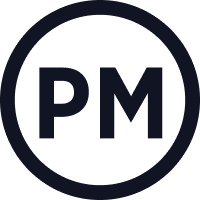
ProjectManager is award-winning production planning software that is online, requiring minimal installation. Its intuitive design and powerful scheduling tools make it a top choice for manufacturers. Users gain access to a full suite of features for production planning, resource management, time tracking and reporting. There’s even a mobile app for managing work directly from the shop floor. Plus, you can try ProjectManager free for 30 days to test its production planning capabilities.
Manage Resources and Costs in Real Time
ProjectManager’s Gantt charts are a critical feature for production planning. They link task dependencies to prevent delays and bottlenecks, while capturing both human and nonhuman resources and associated costs. Planners can set a baseline schedule and compare it to actual progress in real time. This allows teams to quickly identify discrepancies, reallocate resources and keep production on track without disruptions or unnecessary downtime.
Automate Production Workflows
ProjectManager allows teams to create custom workflows that move tasks from one stage to another automatically. Automated triggers can update status, assign tasks and maintain workflow continuity. To ensure quality control, the software includes task approval settings, so authorized personnel can verify work before it moves forward. Workflows are reflected across multiple project views, including Gantt, kanban, list and calendar, keeping everyone aligned with the production schedule.
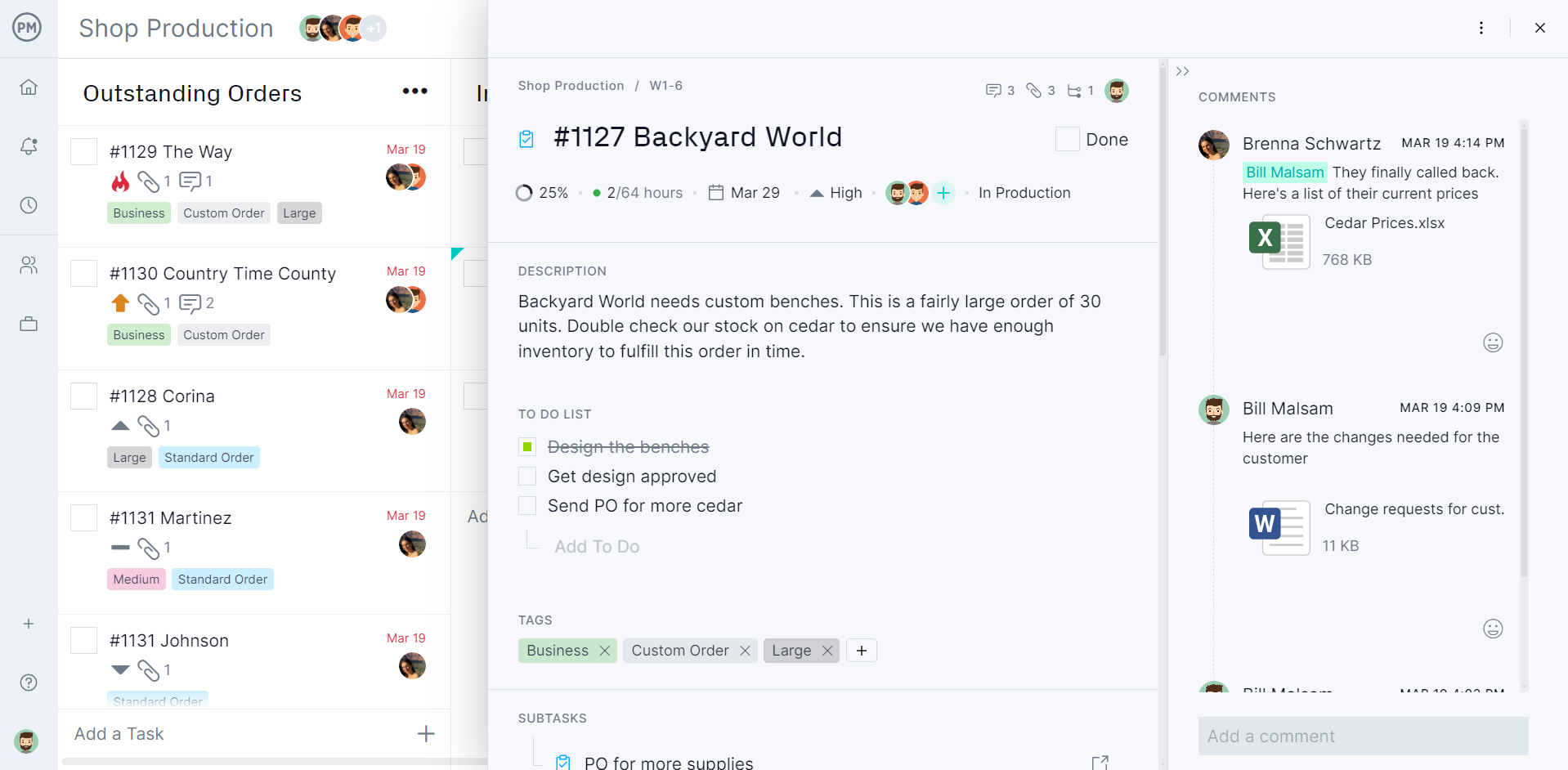
Real-Time Insights into Team Workload and Task Progress
ProjectManager provides robust resource management features to visualize team workload at a glance. Managers can filter tasks by individual, daily or weekly assignments, click into tasks to add comments or files, and update hours in real time. Tasks can be reassigned easily with drag-and-drop functionality, balancing workloads and preventing bottlenecks. These features integrate planning, scheduling and resource management seamlessly, giving teams full visibility and control over production processes.
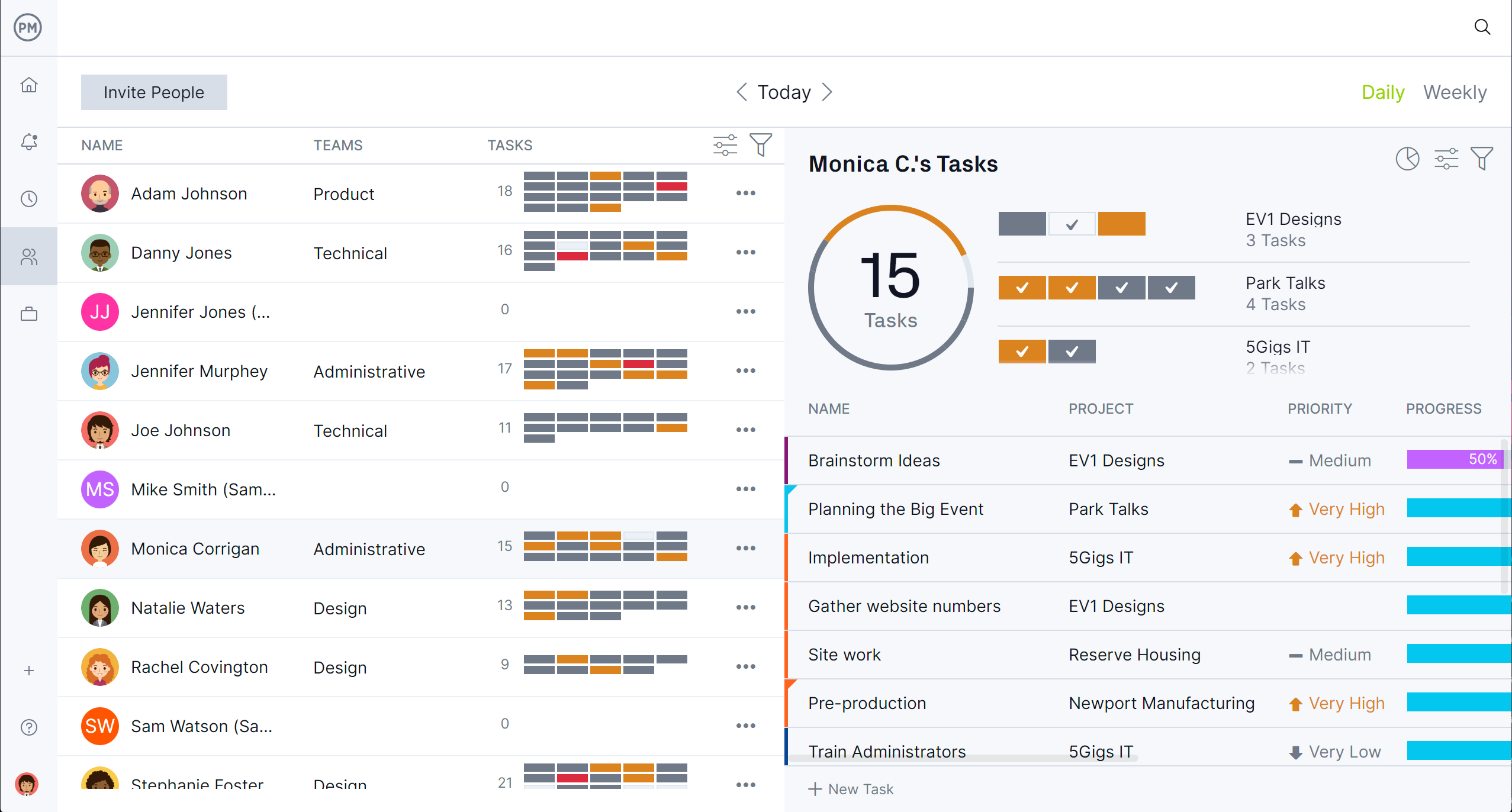
These features make ProjectManager the best production planning software, but its advantages extend further. Task management, risk tracking, time tracking and reporting tools complement scheduling and resource features, giving teams a comprehensive platform to plan, execute and monitor production efficiently. Start a free 30-day trial today to experience how ProjectManager can optimize your production planning.
Verdict: Best Production Planning Software for Manufacturing Projects
ProjectManager Pros & Key Features
- Interactive Gantt charts to visualize tasks, dependencies and milestones while tracking progress in real time
- Customizable workflows with automation and task approval settings to maintain efficiency and quality
- Team page and workload charts for balancing assignments, reallocating tasks and managing resource utilization
- Real-time dashboards and timesheets to monitor labor costs, task progress and key performance indicators
- Multiple project views, including Gantt, kanban, list and calendar for full visibility across the production schedule
- Free 30-day trial to test production planning and resource management features
- Mobile app for Android and iOS to manage work from the shop floor or remotely
ProjectManager Cons & Limitations
- Doesn’t include built-in ERP functionality, though it integrates with tools like Acumatica
- Some manufacturing-specific features are limited
- No dedicated bill of materials support for complex assembly sequences
- Free plan is limited to 30-day trial
ProjectManager Pricing
- Team plan: $14/user/month
- Business plan: $26/user/month
- Enterprise plan: Contact sales
ProjectManager Reviews
- G2 review: 4.4/5
- Capterra review: 4.1/5
Highlighted User Reviews
- “ProjectManager works very well with both large and small-scale projects. Being able to use this with anything from a project involving only two members of staff, to hundreds, has been invaluable.” Peter W – from Capterra
- “We used to manage our projects, resources, and reporting in different systems. Enter ProjectManager. We have consolidated systems and work more efficiently.” Jeffrey M – from Capterra
- “Having the full scope of activities and who is responsible to do it, plus the time tracking is excellent.” Flavio M – from G2
- “It has an excellent accounting system capable of calculating the time that a person has used to develop a task that was assigned to him. I like being able to collaborate with all my colleagues in the Finance sector through ProjectManager.” Jesus C – from G2
- “The UI of the application is user-friendly, and it helps to identify what we are looking for with minimal effort.” Pavan H – from G2
2. Jira
Jira is a widely used project management and issue tracking software that is often adapted for production planning in software development and small-scale manufacturing environments. It allows teams to create, assign and track tasks, visualize workflows using kanban or scrum boards, and monitor progress in real time. Its flexibility and extensive integration ecosystem make it appealing for teams that need a customizable tool to organize work, collaborate across departments, and keep production tasks on schedule.
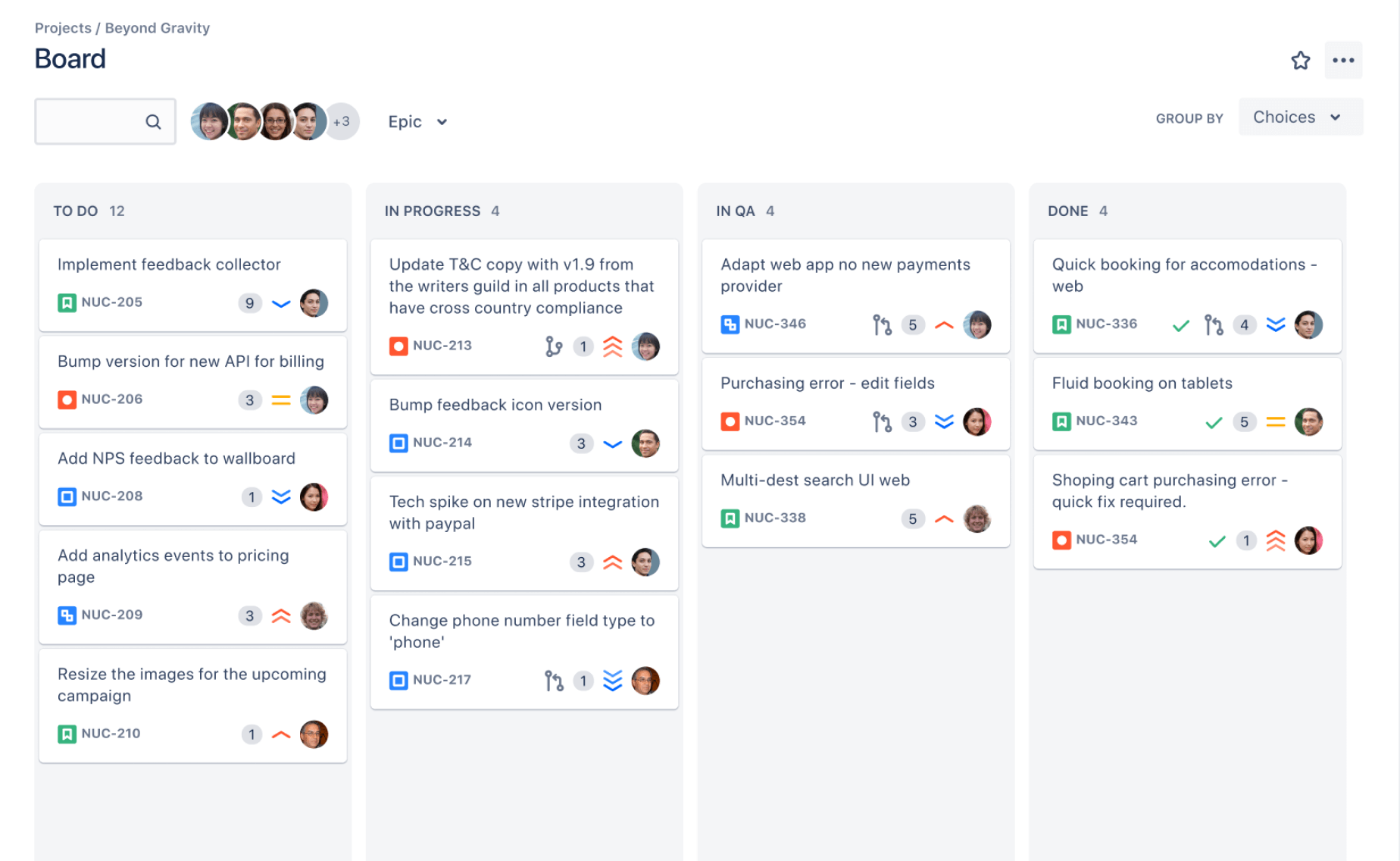
However, Jira has limitations when used as a dedicated production planning software. Its scheduling tools are basic and lack Gantt charts, resource leveling, or advanced material planning capabilities. Teams managing complex production lines or high-volume manufacturing may find it insufficient for detailed planning, tracking dependencies, or optimizing resource allocation. Jira is best suited for software development or workflow management rather than full-scale production operations.
Verdict: Best Production Planning Software for Issue Tracking
Jira Pros & Key Features
- Flexible task management with kanban and scrum boards to visualize workflows
- Customizable dashboards for tracking progress and team performance
- Extensive integrations with other tools for reporting, collaboration, and automation
- Real-time notifications and updates to keep teams informed of changes
- Cloud-based with mobile access for on-the-go task management
Jira Cons & Limitations
- Lacks advanced production planning features such as Gantt charts and resource leveling
- No native material requirements planning (MRP) or inventory management
- Not optimized for high-volume or complex manufacturing operations
- Customization can be complex and may require add-ons or plugins
- Primarily suited for software development and workflow tracking rather than full-scale production planning
Jira Pricing
- Standard: $7.75 per user
- Premium: $15.25 per user
- Enterprise: Custom pricing
Jira Reviews
- G2 review: 4.3/5
- Capterra review: 4.4/5
Highlighted User Reviews
- “In my office we use jira for task management and time management, which helps us for team projects with multiple moving parts.” Saili K – from G2
- “Once we got past the learning phase, Jira significantly improved our project efficiency and collaboration.” Abu R – from Capterra
3. Katana MRP
Katana MRP is a cloud-based production planning software designed for small and medium-sized manufacturers. It provides core tools for production scheduling, inventory management, and order tracking. Users can manage work orders, monitor material availability, and get a clear overview of production progress. Its intuitive interface and integrations with e-commerce and accounting platforms make it a convenient choice for businesses looking for a straightforward solution to manage manufacturing operations.

Despite these advantages, Katana MRP has limitations for larger or more complex production environments. Its scheduling capabilities are less flexible than advanced software, and it lacks robust Gantt charts or detailed resource optimization tools. Additionally, workflow customization is limited and real-time reporting is basic
Verdict: Best Production Planning Software for a Simple Solution
Katana MRP Pros & Key Features
- Automated workflows allow manufacturers to set rules that trigger actions automatically, reducing manual work
- Visibility into raw material availability and stock levels directly linked to production orders
- Seamless integration with e-commerce platforms and accounting software to simplify operations
- Offers a free 14-day trial to test features before committing
Katana MRP Cons & Limitations
- Limited production planning and scheduling features, lacking depth compared to tools like Gantt charts
- No workload management features, such as resource leveling or shift planning
- Absence of project status, cost or health reports limits insight into job-level performance
- Lacks native CRM and customer communication tools, requiring external integrations to manage leads or customer interactions
- No built-in quality control features for inspections, defect tracking or compliance documentation
- Limited customization of workflows and statuses makes it hard to adapt to unique production processes
- No mobile app for on-the-go management
Katana MRP Pricing
- Standard $359/user/month, billed annually
- Professional $799/user/month, billed annually
- Professional Plus, contact sales
Katana MRP Reviews
- G2 review: 4.4/5
- Capterra review: 4.6/5
Highlighted User Reviews
- “I’ve found Katana to be quite easy to use and operate.” Lucas M – from G2
- “The Excel templates allow for bulk uploads of all of the required data categories which don’t need to be uploaded manually.” Brent T – from Capterra
4. Tactic by Waterloo
Tactic by Waterloo is a cloud-based project and production planning software designed for creative and manufacturing teams to manage workflows, resources and schedules. It provides visual planning tools, such as Gantt charts, boards and calendars, that help teams coordinate tasks, assign responsibilities and track progress. Its intuitive interface and real-time updates make it easier for teams to adjust priorities and maintain visibility across multiple projects.

Despite its useful features, Tactic by Waterloo has limitations for complex production environments. While it works well for small to medium-sized operations, it lacks advanced production planning capabilities such as deep inventory management, material requirements planning and comprehensive resource optimization. Teams managing high-volume manufacturing or intricate production processes may need additional tools to fully streamline operations and achieve maximum efficiency.
Verdict: Best Production Scheduling Software for Visual Planning
Tactic by Waterloo Pros & Key Features
- Visual planning with Gantt charts, boards and calendars for task and schedule tracking
- Real-time updates and notifications to adjust workflows as needed
- Intuitive interface that simplifies onboarding and boosts team collaboration
- Resource management tools for assigning tasks and balancing workloads
- Cloud-based platform for remote access and multi-project oversight
Tactic by Waterloo Cons & Limitations
- Lacks advanced production planning features such as material requirements planning
- No deep inventory management or automated workflow triggers
- Not designed for high-volume or highly complex manufacturing operations
- Customization options are limited, making it harder to tailor to unique workflows
- May require integrations with other tools for full production optimization
Tactic by Waterloo Pricing
- $3 per desk/month
Tactic by Waterloo Reviews
- G2 Review: 4.8/5
- Capterra Review: 4.6/5
Highlighted User Reviews
- “One of the things I really appreciate about Tactic is the ability to reserve my preferred computer station and easily check who will be working on that day. It’s so convenient to see the availability of each person and their specific time slots.” Angela O. – from G2
- “Tactic helped our company streamline our scheduling procedures–specifically regarding increased visibility and organization of our daily operations.” Tyler F. from Capterria
5. SAP PP
SAP PP (Production Planning) is part of the SAP ERP suite and provides comprehensive tools for planning and managing manufacturing processes. It includes features such as material requirements planning (MRP), production scheduling, shop floor control and inventory management. For large manufacturers with complex operations, SAP PP offers integrated planning capabilities that connect production with procurement, sales and finance, giving managers a centralized view of their production processes.
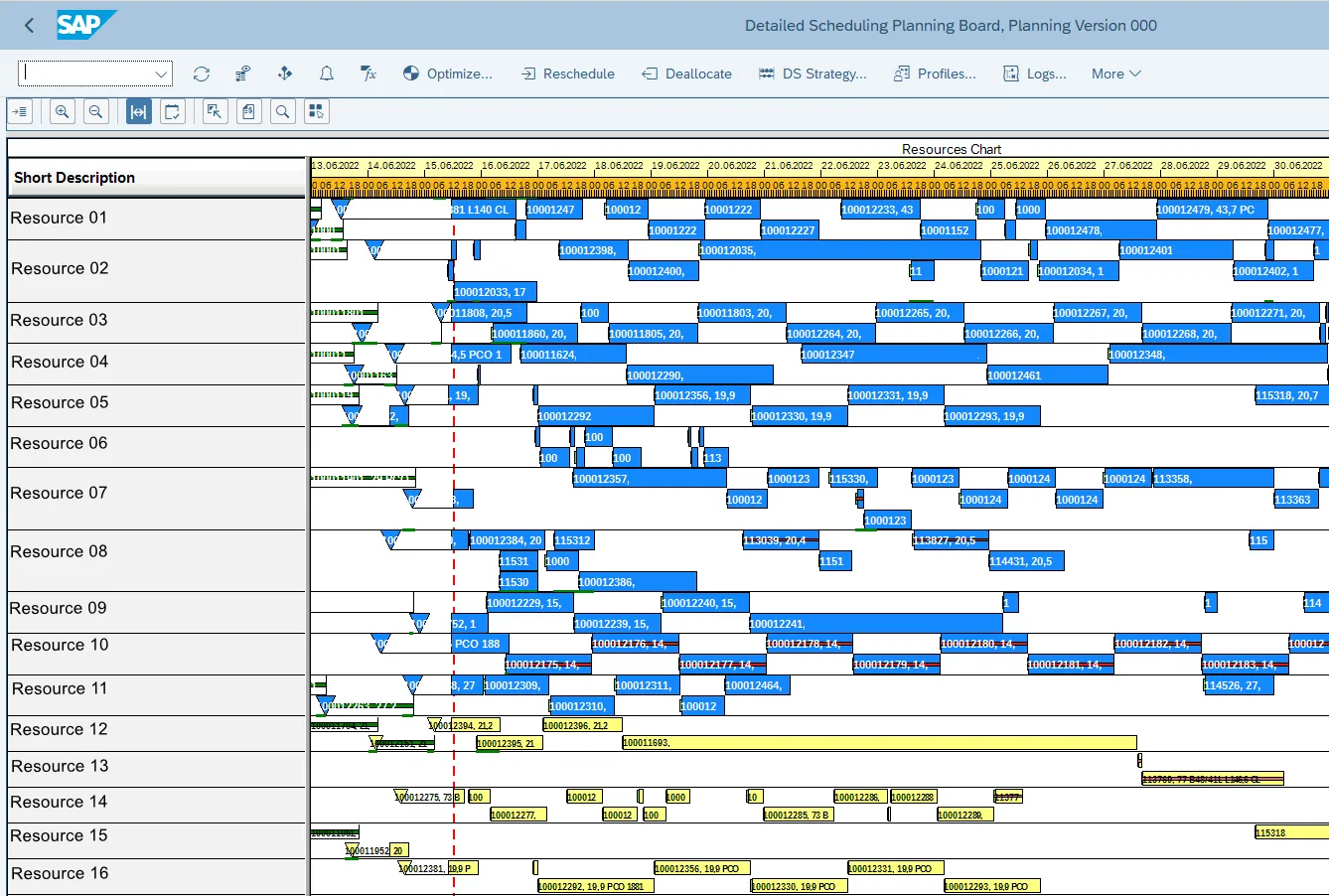
However, SAP PP has significant limitations for smaller manufacturers or teams without dedicated IT support. Its interface can be complex and difficult to navigate, requiring extensive training for effective use. Customization is often necessary to adapt workflows, which increases implementation time and cost. Additionally, it lacks the intuitive user experience and flexibility found in dedicated production planning software, making it less ideal for companies seeking quick deployment and easy-to-use planning tools.
Verdict: Best Production Planning Software for Large, Complex Operations
SAP PP Pros & Key Features
- Comprehensive production planning and scheduling tools suitable for complex manufacturing environments
- Material Requirements Planning (MRP) integrates with inventory and procurement for efficient resource allocation
- Shop floor control provides visibility into ongoing production tasks and resource utilization
- Integration with other SAP modules ensures seamless data flow across finance, sales and procurement
- Real-time reporting and analytics for monitoring production performance and identifying bottlenecks
SAP PP Cons & Limitations
- Complex interface with a steep learning curve requiring extensive training for effective use
- Customization often necessary to adapt workflows, increasing implementation time and cost
- Less intuitive and flexible than dedicated production planning software
- High cost, making it less suitable for small or medium-sized manufacturers
- Deployment and ongoing maintenance can be resource-intensive, often requiring dedicated IT support
SAP PP Pricing
- Module within larger SAP software, cost is not a standalone figure
SAP PP Reviews
- G2 Review: 4.2/5
- Capterra Review: 4.3/5
Highlighted User Reviews
- “SAP Customer Data Platform helps us to build trust with customers and reduce the time to market products. It has a holistic view of customer data, which is very helpful to our management in making decisions. It complies with all of our required compliance.” Rajiv T. – from G2
- “The thing I like most about this is that you can manage all the Enterprise Resources, so that you can get better efficiency. Javier R. – from Capterra
6. MRPeasy
MRPeasy is a cloud-based production planning software that provides essential tools for small manufacturers and startups. It includes features such as production scheduling, inventory management, bill of materials and basic reporting. Users can create work orders, track material consumption and monitor shop floor progress, making it a suitable option for teams that need a simple, affordable solution to manage small-scale production processes.
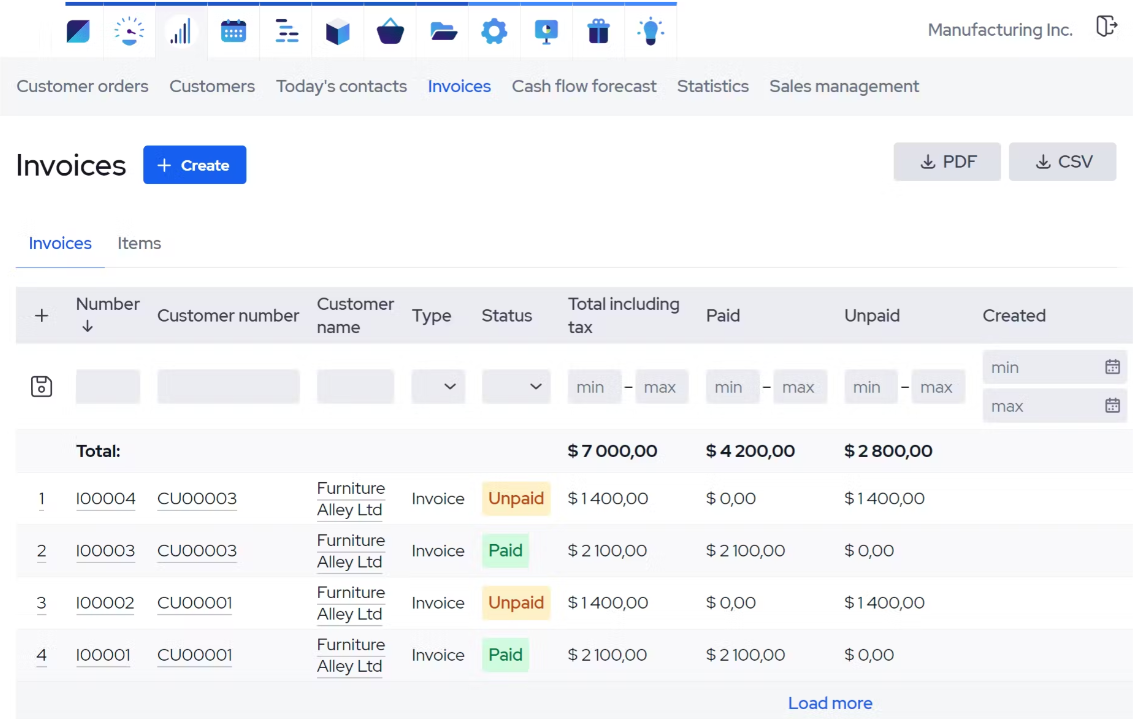
However, MRPeasy has notable limitations that may hinder larger or more complex operations. Its scheduling tools are not as robust or flexible as those in advanced production planning software, and real-time dashboards and Gantt charts are limited. Additionally, it lacks deep resource optimization, workflow automation and advanced reporting, which can make managing multiple production lines or high-volume manufacturing less efficient. Teams may quickly outgrow the platform if their processes become more complex.
Verdict: MRPeasy Best Production Planning Software for Order Management
MRPeasy Pros & Key Features
- Tracks customer information, including order history, details and communications for better order management
- Integrates with QuickBooks and Xero, streamlining invoicing, expense tracking and financial reporting
- Built-in production planning and inventory management provide real-time visibility into schedules, inventory levels and material requirements
- Offers a free trial for testing core functionality
- Accessible via mobile app on Android and iOS for basic on-the-go management
MRPeasy Cons & Limitations
- Only offers a calendar view for scheduling, lacking dynamic tools like Gantt charts for complex planning
- Relies on integrations for full functionality, adding costs and setup complexity
- No workload management tools for balancing tasks across employees or machines
- Limited workflow customization, which can frustrate manufacturers with specialized processes
- No native mobile app for advanced operations management on the go
- Steep learning curve for non-technical users, requiring additional training
MRPeasy Pricing
- Starter $49/user/month
- Professional $69/user/month
- Enterprise $99/user/month
- Unlimited $149/user/month
MRPeasy Reviews
- G2 review: 4.5/5
- Capterra review: 4.5/5
Highlighted User Reviews
- “It covers all the essential features I need to manage my manufacturing processes, from inventory tracking to order management, without overwhelming me with complexity.” Alice B – from G2
- “It provided a solid foundation for managing manufacturing processes and streamlining operations.” Marek T – from Capterra
7. DELMIAWorks
DELMIAWorks, formerly IQMS, is a cloud-based manufacturing ERP and production planning software designed for small to medium-sized manufacturers. It provides integrated modules for production scheduling, inventory management, quality control and supply chain management. With real-time data and centralized dashboards, DELMIAWorks helps teams coordinate production tasks, monitor work orders and maintain visibility across multiple manufacturing sites, making it suitable for companies seeking an all-in-one solution for operations management.
[screenshot]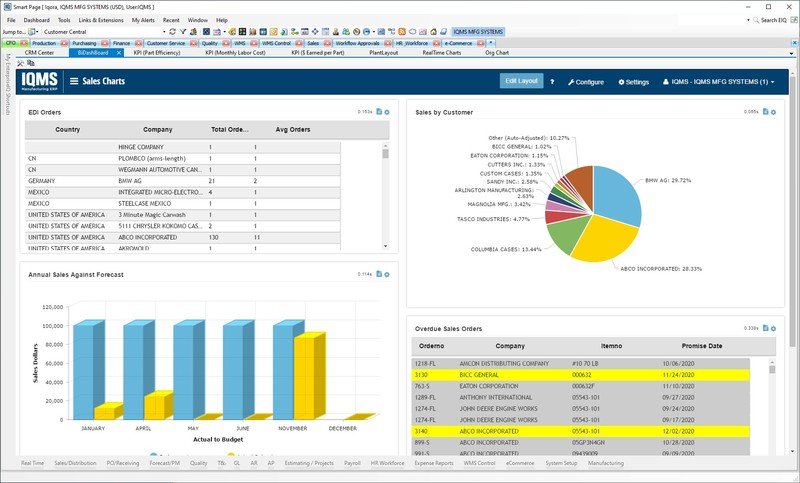
Despite its comprehensive feature set, DELMIAWorks can be complex to implement and navigate, particularly for smaller manufacturers without dedicated IT support. While it offers scheduling tools and production tracking, it lacks the intuitive interface and flexibility found in some modern production planning software. Customization and configuration are often required to fully adapt the system to unique workflows, which can increase implementation time and costs, and may be challenging for teams seeking a quick, straightforward solution.
Verdict: Best Production Planning Software for Quality Control
DELMIAWorks Pros & Key Features
- Integrated production scheduling, inventory management and supply chain tools for streamlined operations
- Real-time dashboards and reporting for monitoring production progress and performance
- Quality control modules to manage inspections, defects and compliance documentation
- Supports multiple manufacturing sites and centralized data management
- Cloud-based with accessibility from anywhere for remote oversight
DELMIAWorks Cons & Limitations
- Complex interface with a steep learning curve, requiring training and support
- Customization and configuration often necessary to adapt to unique workflows
- Lacks the intuitive usability and flexibility of modern production planning software
- Implementation can be time-consuming and resource-intensive
- May be overwhelming for smaller manufacturers seeking a simple, quick-to-deploy solution
DELMIAWorks Pricing
- Contact sales
DELMIAWorks Reviews
- G2 review: 4.1/5
- Capterra review: 4.1/5
Highlighted User Reviews
- “I like its concept of making jobs easier by making your business operations transparent and more organized. Easy to manage and handle” Khurshid Muhammad S. – from G2
- “It includes everything from order entry, inventory, machine scheduling to accounting.” Pierrette L. – from Capterra
8. NetSuite
NetSuite is a cloud-based enterprise resource planning (ERP) system that includes production planning features suitable for small to medium manufacturers. It provides inventory management, demand planning, work order scheduling and supply chain visibility, all within an integrated platform. Companies already using NetSuite for accounting or CRM benefit from having production data consolidated in one system, making it easier to track materials, plan orders and monitor basic workflow progress.
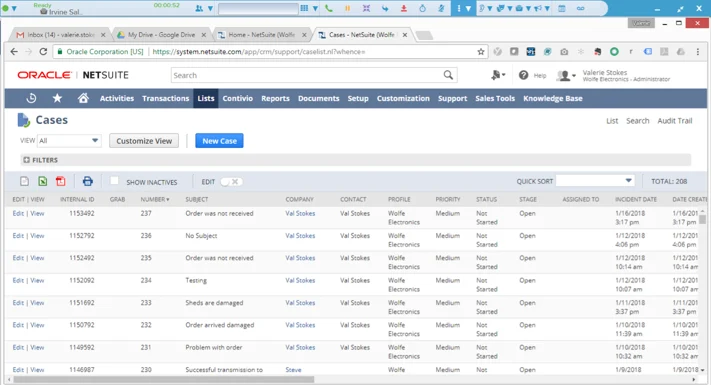
Despite these advantages, NetSuite has limitations compared to dedicated production planning software. Scheduling tools are less flexible, Gantt charts are limited or require customization, and resource leveling is basic. For complex production lines, high-volume operations or teams that need detailed visibility and workflow automation, NetSuite may not provide the depth and ease of use required to optimize production effectively.
Verdict: Best Production Planning Software for Smaller Manufacturers
NetSuite Pros & Key Features
- Inventory management and supply chain visibility are integrated with production planning for better resource tracking
- Demand planning tools help forecast material requirements and schedule work orders effectively
- Work order scheduling and basic workflow automation streamline production tasks
- Real-time dashboards and reporting provide oversight of production performance
- Free trial available to test core functionality before full implementation
NetSuite Cons & Limitations
- Designed for larger organizations; smaller companies may find its complexity overwhelming
- Steep learning curve requiring training, customization and IT resources
- High cost and need for add-ons to meet specific production requirements
- Limited scheduling flexibility without extensive customization, increasing implementation time and cost
- Support can be slow and often relies on third parties for technical assistance
- Overkill for simple manufacturing operations, making the software feel bloated for smaller setups
NetSuite Pricing
- Contact for quote
NetSuite Reviews
- G2 review: 4/5
- Capterra review: 4.2/5
Highlighted User Reviews
- “The best part about NetSuite is the ease of use for new users across our organization.” Joe W – from G2
- “NetSuite was the easiest ERP Software to learn and use.” Wes P – from Capterra
9. Visual Planning
Visual Planning is a cloud-based production planning and scheduling software designed to help teams organize tasks, allocate resources and optimize workflows. Its drag-and-drop interface allows users to create visual schedules for employees, equipment and projects, making it easier to monitor progress and adjust plans in real time. The platform supports multiple views, including Gantt charts, calendars and boards, providing flexibility for different operational needs and improving overall workflow visibility.
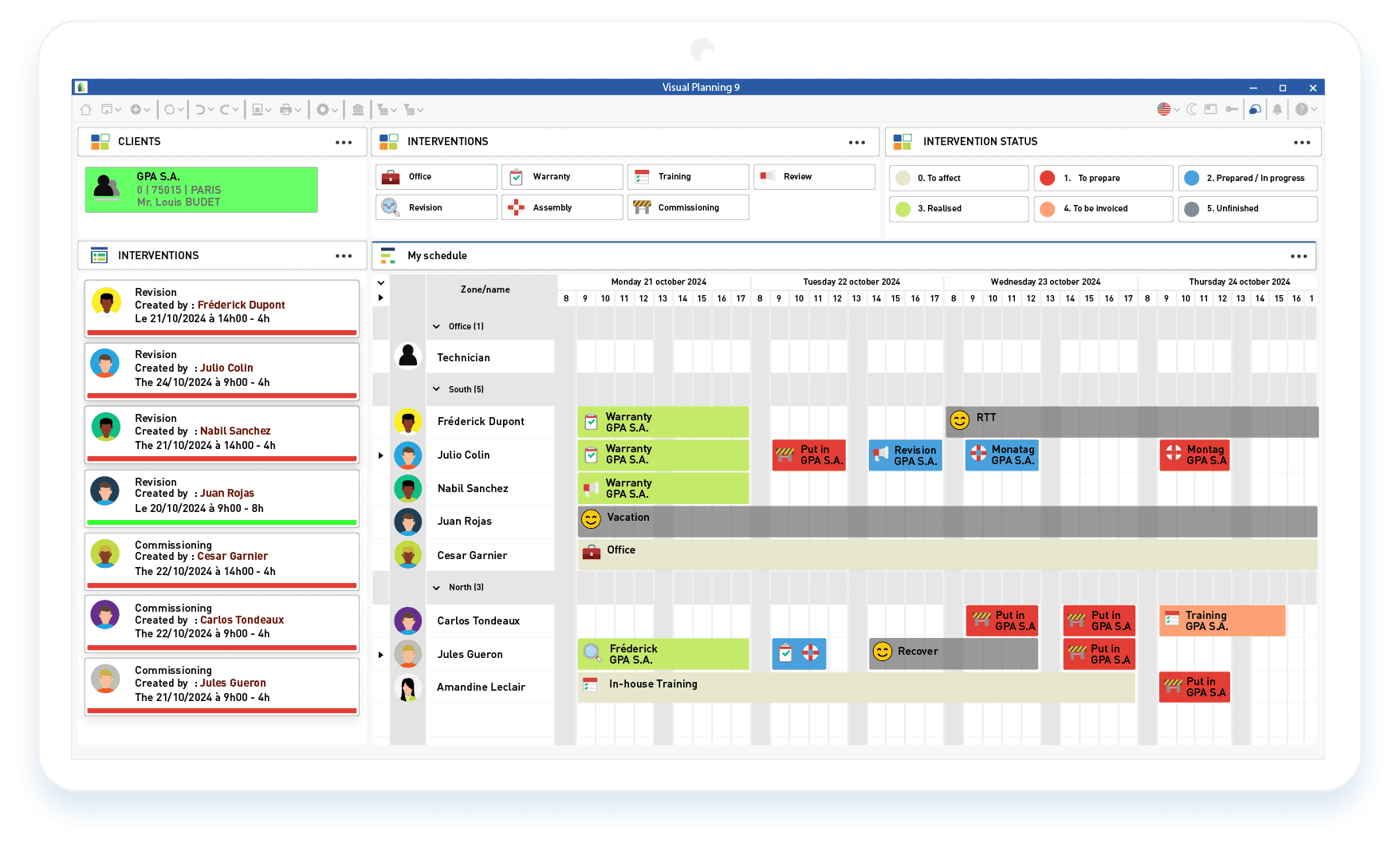
Despite its visual appeal and ease of use, Visual Planning has limitations when compared to comprehensive production planning software. Its features are better suited for small to medium operations and may struggle with complex production lines or high-volume manufacturing. Advanced capabilities like material requirements planning, deep inventory tracking, and automated workflow management are limited, meaning teams with complex processes may need additional tools to fully optimize production.
Verdict: Best Production Planning Software for Flexible Operational Needs
Visual Planning is a user-friendly cloud-based solution for production scheduling and resource management. It provides visual tools like Gantt charts, calendars and boards that help teams plan tasks, allocate resources and track progress, making it ideal for small to medium-sized operations seeking clear workflow visibility.
Visual Planning Pros & Key Features
- Drag-and-drop interface for easy scheduling of tasks, resources and projects
- Multiple visual views including Gantt charts, calendars and boards for flexible planning
- Real-time updates and notifications to keep teams informed of changes
- Resource allocation tools to optimize workforce and equipment usage
- Cloud-based access for remote teams and multi-location visibility
Visual Planning Cons & Limitations
- Limited advanced production planning features such as material requirements planning
- Lacks deep inventory tracking and automated workflow management
- May not scale well for complex or high-volume manufacturing operations
- Smaller feature set compared to comprehensive ERP or production planning software
- Customization options are limited, which can restrict adaptation to unique processes
Visual Planning Pricing
- VP Go $15/user/month, annual billing
- VP Portal $40/user/month, annual billing
- VP Desk $55/user/month, annual billing
Visual Planning Reviews
- G2 review: 3.8/5
- Capterra review: 4.6/5
Highlighted User Reviews
- “Scheduling tasks for different employees is very simple, you just click on their box and then click add card.” Benjamin M – from G2
- “Great for keeping up with a fluid production schedule.” Dave O – from Capterra
10. Fishbowl Inventory
Fishbowl Inventory provides small to mid-sized businesses with essential production planning tools such as inventory control, work order management and basic scheduling features. It integrates with accounting platforms like QuickBooks and Xero, allowing for smoother financial tracking alongside production activities. The system also supports barcode scanning and part tracking, making it useful for manufacturers needing better inventory accuracy and streamlined order fulfillment processes.
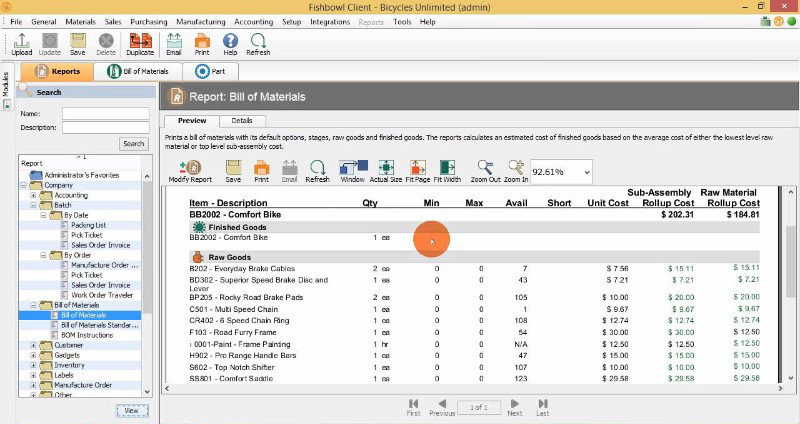
However, Fishbowl Inventory can feel limited compared to more comprehensive production planning solutions. It lacks advanced scheduling features like Gantt charts, workload management and automated workflows, which are essential for complex manufacturing environments. Reporting tools are also less sophisticated, restricting real-time insights into production performance. Additionally, the software has a steep learning curve and often requires additional integrations to achieve full functionality, increasing overall costs and setup time.
Verdict: Best Production Planning Software for Warehouse and Manufacturing Workflows
Fishbowl Inventory is the ideal software for teams managing warehouse and manufacturing workflows, as it features specialized tools like inventory control and work order management. It’s designed to help improve basic scheduling and task sequences to improve shop floor processes.
Fishbowl Inventory Pros & Key Features
- Robust inventory control with part tracking to improve accuracy and reduce stockouts
- Work order management to structure builds and align shop floor activities
- Basic scheduling to sequence tasks and monitor progress at a high level
- Integrations with QuickBooks and Xero to connect production and accounting
- Barcode scanning support to speed receiving, picking and cycle counts
Fishbowl Inventory Cons & Limitations
- Lacks advanced scheduling such as Gantt charts, workload balancing and automated workflows
- Reporting is limited, reducing real-time insight into costs and performance
- Steep learning curve for new users that can slow adoption
- Often requires extra integrations for full functionality, adding cost and setup time
Fishbowl Inventory Pricing
- Contact for quote (starting at $4,395)
Fishbowl Inventory Reviews
- G2 review: 4/5
- Capterra review: 4.2/5
Highlighted User Reviews
- “We were looking for a platform to help us keep up with our inventory quantities, costs, ordering, and manufacturing.” Bryan W – from G2
- “There is a learning curve but in the end you have what you need.” Rulon C – from Capterra
Related Content
The best production planning software is necessary to do the job of a manufacturing company more efficiently and effectively. For those who want to read more about project management software, production management, planning and more, check out the links below.
- Best Project Management Software: Rankings, Reviews & Comparisons
- Production Management: A Quick Guide
- Production Planning in Manufacturing: Best Practices
- Production Scheduling Basics
- How to Create a Master Production Schedule (MPS)
ProjectManager is online production planning software that empowers everyone to plan, manage and track their production run in real time. It gives manufacturers automated and custom workload, task approval, filtered reports and much more. Join teams at Avis, Nestle and Siemens who use our software to deliver successful projects. Get started with ProjectManager today for free.

